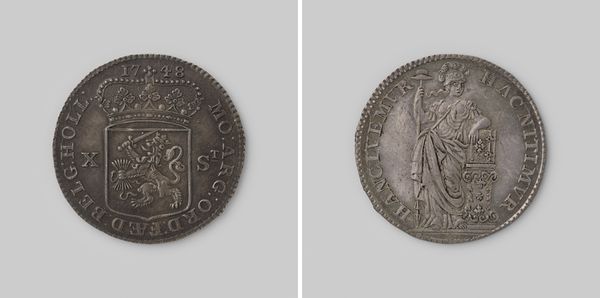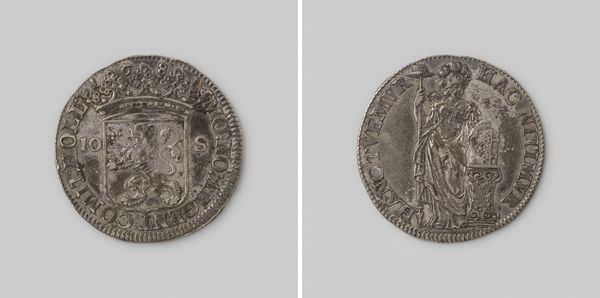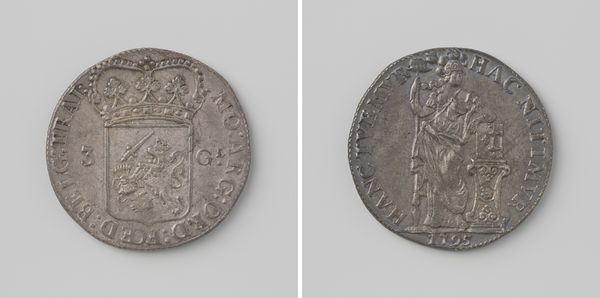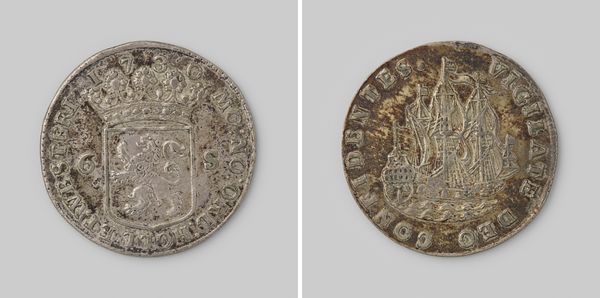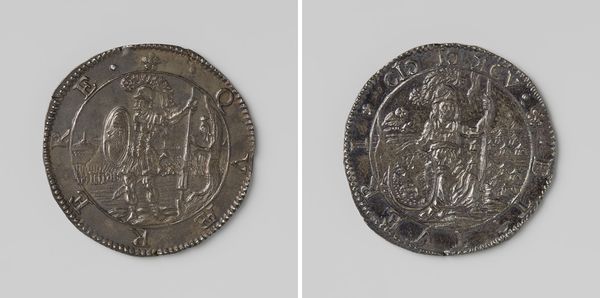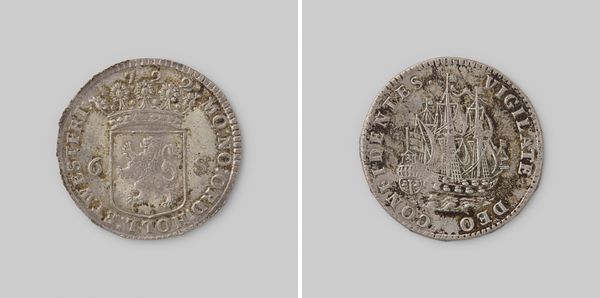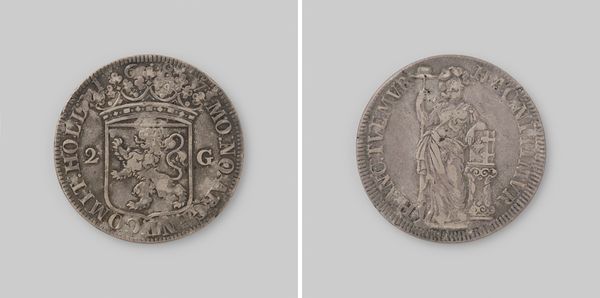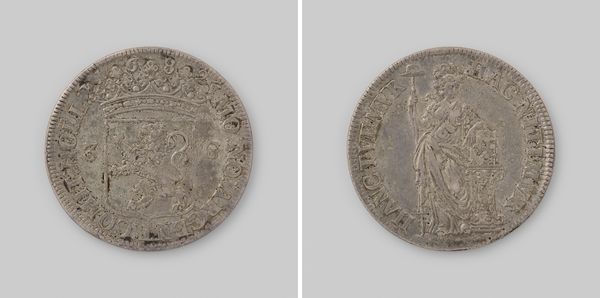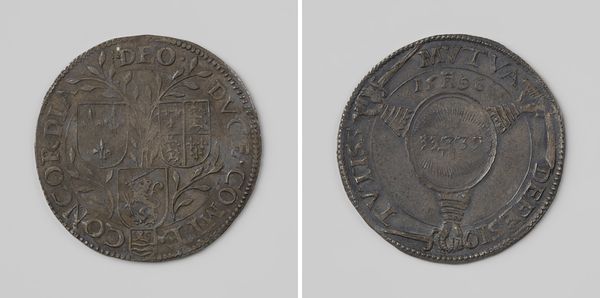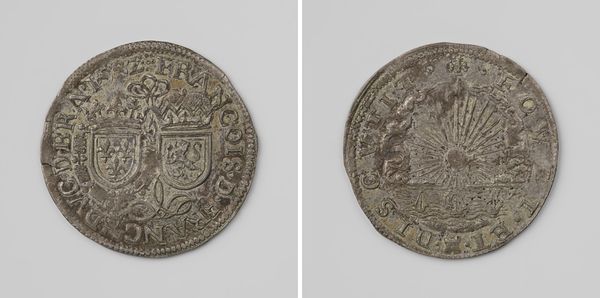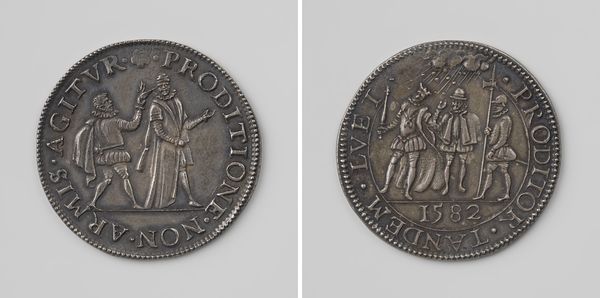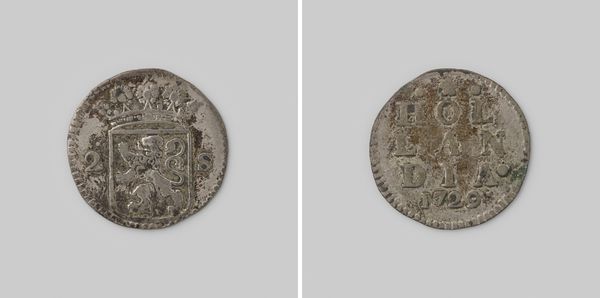
print, metal, relief, sculpture, engraving
#
portrait
#
baroque
# print
#
metal
#
sculpture
#
relief
#
sculpture
#
engraving
Dimensions: diameter 2.9 cm, weight 5.35 gr
Copyright: Rijks Museum: Open Domain
Curator: I find the stark simplicity of this coin unexpectedly moving. The piece, from 1749, is called "Hollandse halve gulden". Editor: It feels burdened. Look at the level of wear. Every groove, every worn detail whispers of transactions and a past world that it once touched. Curator: Indeed. Let’s analyze it. Each side showcases distinct relief engraving. On one side, the crowned arms of Holland are quite central, circumscribed by text that denotes its value and authority. On the other, a standing figure—what I believe represents the Dutch Maiden. Editor: The Dutch Maiden serves here as a public symbol, a visual assertion of the province of Holland and its values in the mid-18th century. This piece of currency was a projection of power meant to legitimize authority in the eyes of those who held it. Imagine the socio-economic structure this small token embodies! Curator: Precisely. And let us look closer at that figure. Notice how her drapery flows, delineating her form while hinting at movement? Or consider the rigorous pattern of lettering around her—the way the text is carefully integrated with the image? Every aspect creates visual unity. Editor: But doesn’t it seem rather…idealized? The smooth texture flattens social complexities, essentially offering a prettified story of stability. How much did this narrative match the life of, say, an impoverished farmer handing this very coin over at market? Curator: Such tensions are implicit within this style and the artwork; after all, there’s also incredible textural work on both sides. Note how the engraver achieved varied levels of relief to evoke depth. Or the radial lines around the coin, subtly playing with light and shadow. Editor: That radial design speaks of standardized manufacture. It makes one reflect on Baroque modes of image production intended for wider consumption, especially during the rise of mercantilism. These currencies helped shape economic practices that touched upon larger societal shifts, I believe. Curator: Fascinating to consider. What at first seemed simple proves a compelling convergence of form and context, a union, shall we say, richer than its material worth. Editor: Precisely, by understanding these nuances, we understand more about societal values encoded within such material things.
Comments
No comments
Be the first to comment and join the conversation on the ultimate creative platform.
